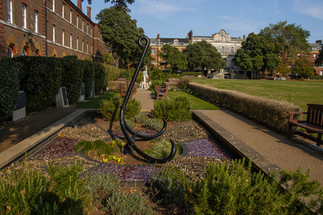HMS Vindictive ... in Ostend
- jochengielen
- Jul 25, 2022
- 2 min read
Updated: Jan 25
At the new Eastern breakwater protecting the entrance of the Belgian Port of Ostend (Oostende in Flemish) is a part of the bow of a ship called HMS Vindictive ... So?

Postcard in my collection
What is so special about the HMS Vindictive? This warship was built in 1897 in Chatham dockyard in England as a British Navy Cruiser of the Arrogant-class, so far nothing special about her. That is until World War 1 started, she served in the war until she was refitted in 1918 with howitzers, flame-throwers and mortars, most of her regular guns were removed. This was to prepare her for the Zeebrugge raid.
The raid was carried out on April 23rd, 1918 and although she was heavily damaged, Vindictive survived the raid, her captain was awarded the Victoria Cross for his actions during the raid. The ship was used in a second raid, namely the second Ostend raid on May 10th, 1918. This time the ship was used as a blockship as her design was already obsolete by that time. Her forward ballast tanks were filled with concrete. So the ship was disposed of in this way rather than just scrap her.
After the war the ship remained half sunk in Ostend until she was finally broken up in 1920, her bow was partially preserved as a memorial and placed near the port of Ostend. When the new port entrance of Ostend was constructed, the memorial was relocated to the Eastern mole.

Below is a series of photos of the piece of her bow on display in Ostend and a collection of photos from the Seafront museum in Zeebrugge (www.seafront.be) where the story of the Zeebrugge raid and the Ostend raid is explained.
In January 2024, I visited London and of course had to go see the Maritime Museum of Greenwich. This museum has 2 distinct items on display from HMS Vindictive.
The Capstan Top from HMS Vindictive that was inscribed to commemorate the Zeebrugge raid, this capstan top was an original from 1897 when the ship was built.

The Lewis Machine-Gun, this gun was damaged by enemy fire in the Zeebrugge raid and was later presented to one of the officers of the ship, eventually it ended up in the collection of the museum where it is proudly on display. You can still see where a large gap was created by a German bullet.

In September 2024 when I was in Portsmouth, I was exploring the area behind the Eastney batteries and noticed the Parapet Anchor that was placed as a memorial, this anchor was used in the Zeebrugge raid by HMS Vindictive.














































Comments